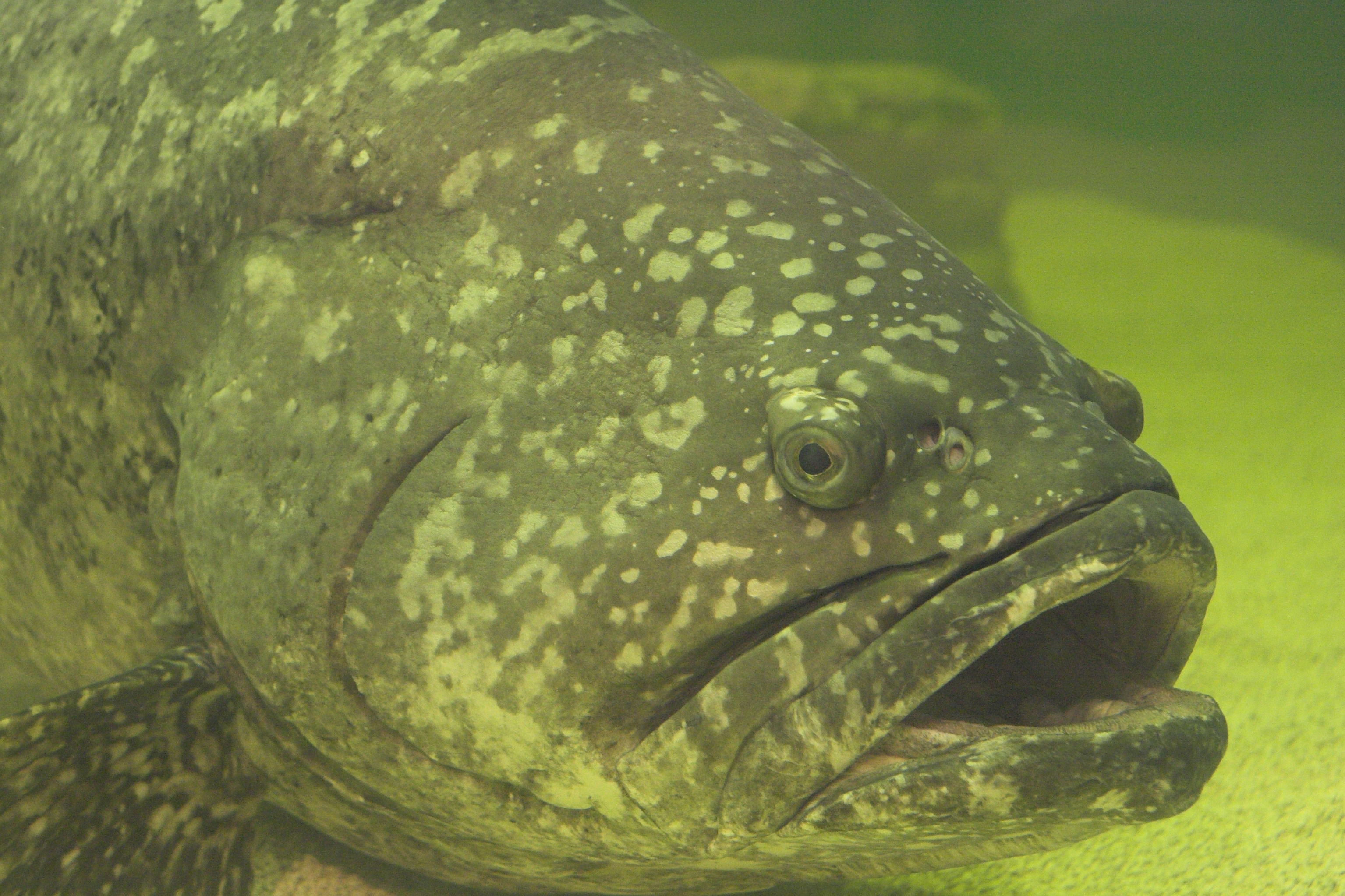- Pacific Goliath grouper
Taxobox
name = Pacific Goliath grouper
status = CR
status_system = iucn2.3
status_ref =
trend = unknown

image_width = 250px
regnum =Animal ia
phylum = Chordata
classis =Actinopterygii
ordo =Perciformes
familia =Serranidae
genus = "Epinephelus "
species = "E. quinquefasciatus"
binomial = "Epinephelus quinquefasciatus"
binomial_authority = (Bocourt, 1868)The Pacific goliath grouper or quinquefasciatus ("Epinephelus quinquefasciatus") is a large saltwater fish of thegrouper family. It is a relative to theAtlantic Goliath grouper .The goliath grouper is found primarily in shallow tropical waters among
coral and artificial reefs at depths of up to 165 feet (50 m). Their range includes the area from theGulf of California toPeru . [http://www.bio.fsu.edu/coleman_lab/goliath_grouper.php Florida State University Coleman and Koenig Research Laboratory]Young grouper may live in
brackish estuaries, and canals.They may reach extremely large sizes, growing to lengths of 8.2 feet (2.5 m) and can weigh as much as 800 pounds (363 kg). They are usually around 400 lb when mature. The goliath grouper's inquisitive and generally fearless nature make it a relatively easy prey for spear fishermen. They also tend to spawn in large aggregations returning like clockwork to the same locations making them particularly vulnerable to mass harvesting. Unlike its cousin, the
Atlantic Goliath grouper , the Pacific grouper was relatively unharmed by fishing but it still will probably warrant protection soon.Goliath grouper eat
crustacean s, otherfish ,octopus es and youngsea turtles . Grouper are preyed upon by large fish such asbarracuda ,moray eel s and largeshark s.Goliath grouper are believed to be protogynous
hermaphrodite s, with individuals first maturing as females and only some large adults becoming males. Mostgrouper follow this pattern, but it has not yet been verified for the Goliath. [http://www.flmnh.ufl.edu/fish/gallery/descript/goliathgrouper/goliathgrouper.html Florida Museum of Natural History] In fact, Bullock et al. found that males could be sexually mature at smaller sizes (~1150mm) and younger ages (4-6 years) than females (~1225mm and ~6-8 years). [Bullock et al. (1992) Age, Growth and Reproduction in the Eastern Gulf of Mexico U.S. Fishery Bulletin 90(2):243-249 retrieved April 8, 2008 from http://myfwc.com/Marine/grouper/goliath_grouper/reports.htm]References
External links
Wikimedia Foundation. 2010.
